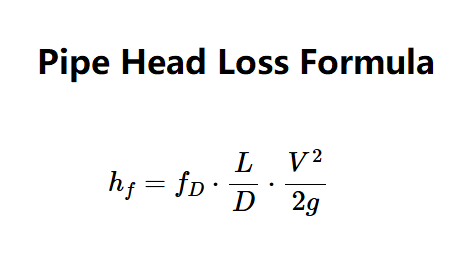 Home
Home
 Back
Back

Definition: Head loss (hf) is the reduction in the total head (sum of elevation head, velocity head, and pressure head) of a fluid as it moves through a pipe due to friction.
Purpose: It is used to determine the energy loss in fluid systems, which is crucial for designing efficient piping systems.
The head loss is calculated using the formula:
Variables:
Details: This calculation is essential for designing efficient piping systems, ensuring that the system can handle the required flow without excessive energy loss.
Tips: Enter the friction factor, pipe length, pipe diameter, and average velocity. Click "Calculate" to get the head loss in various units.
Q1: What is the friction factor (fD)?
A: The friction factor is a dimensionless number that depends on the roughness of the pipe and the Reynolds number of the flow.
Q2: Can I use this calculator for any fluid?
A: Yes, this calculator is applicable to any fluid as long as the input values are provided correctly.
Q3: Why is the head loss important?
A: Head loss is important because it affects the efficiency of the piping system and the energy required to pump the fluid.
Q4: What units should I use for pipe length and diameter?
A: You can use any length unit (m, cm, mm, ft, in, yard, km). The calculator will automatically convert all values to meters for calculation.
Q5: How accurate is this calculator?
A: The calculator provides accurate results based on the input values and formula. However, real-world conditions may introduce additional factors not accounted for here.